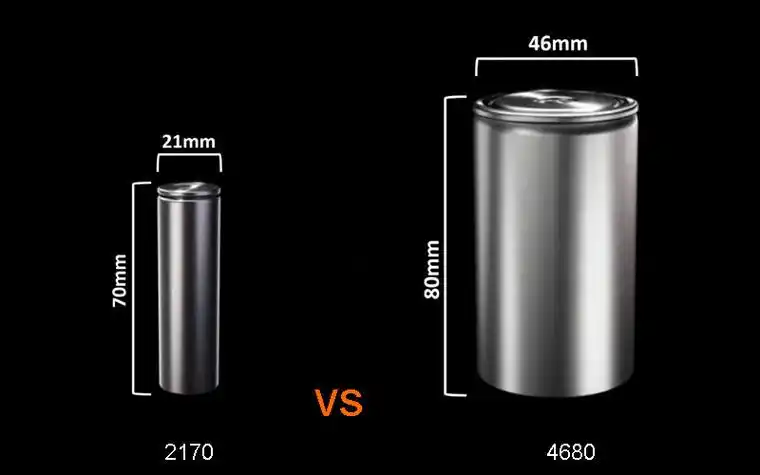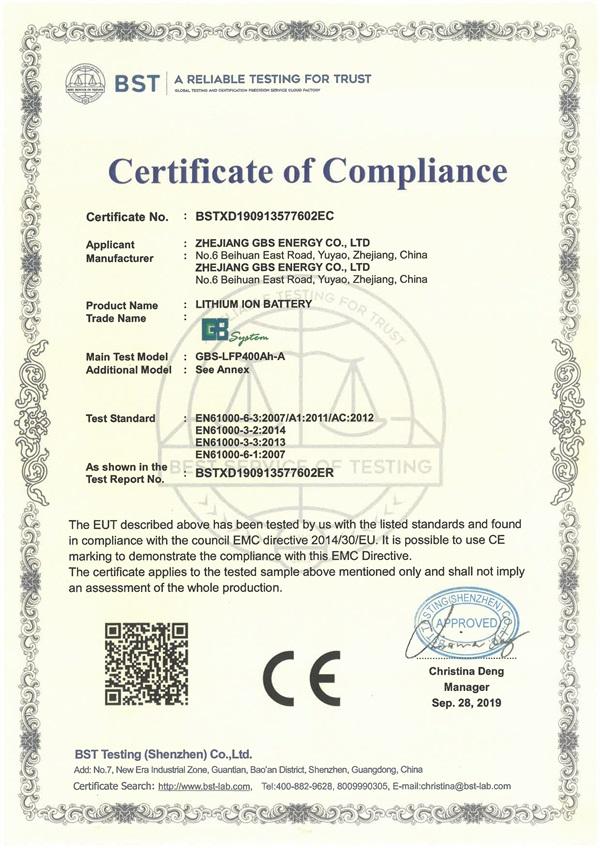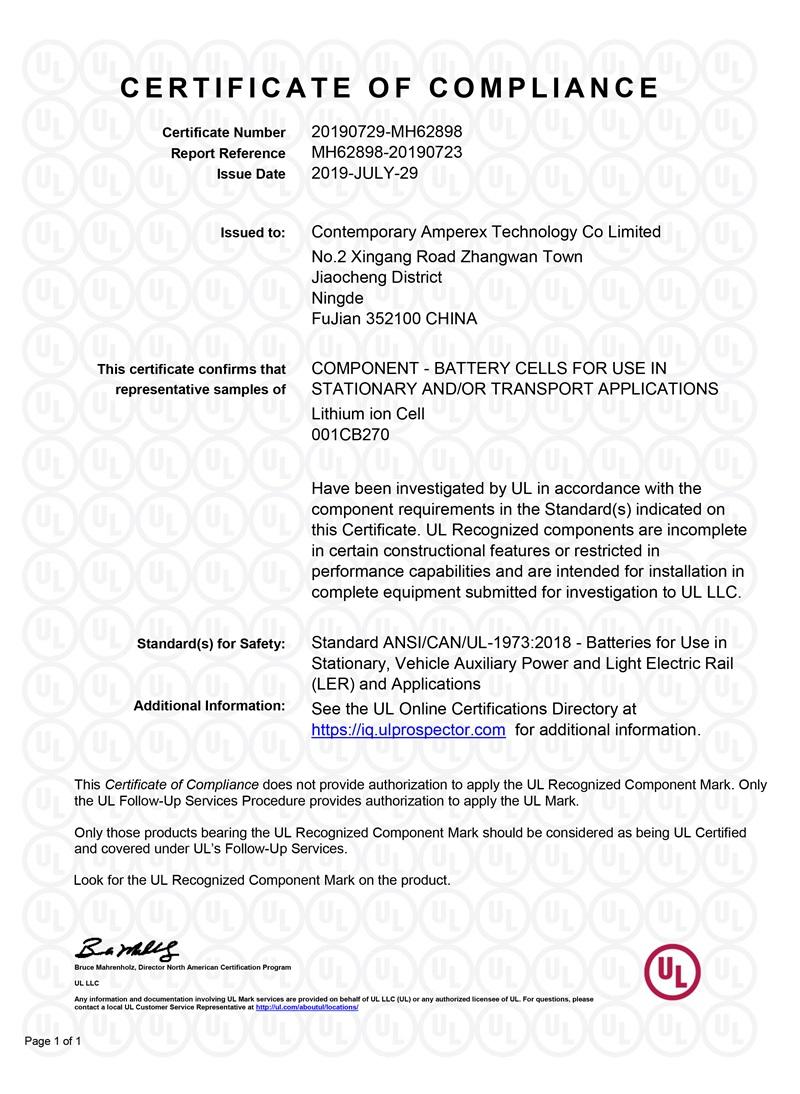Blog
Everything You Need to Know About the 4680 Battery
2025-05-16 | Calvin

Battery technology is entering a new era, and the 4680 lithium-ion cell is one of the key drivers of this transformation. First introduced by Tesla at its 2020 Battery Day, the 4680 battery promises higher energy output, improved thermal efficiency, and lower production costs. In this article, we’ll explore its technical specifications, performance advantages, and its potential impact on the EV and energy storage industries.
🔍 What Is the 4680 Battery?
The 4680 battery is a cylindrical lithium-ion battery with dimensions of 46mm in diameter and 80mm in height. Compared to the widely-used 2170 cells, the 4680 offers a significantly larger volume, allowing for:
- More active material per cell
- Reduced internal resistance
- Improved structural efficiency through tabless electrode design
According to Tesla’s technical claims, this design contributes to a 5x increase in energy, 6x increase in power, and 16% longer vehicle range compared to previous battery cells (Tesla, 2020).
🚘 Tesla’s Integration of 4680 Cells
Tesla began piloting 4680 cells at its Kato Road facility in California and has started integrating them into its Model Y vehicles produced at Giga Texas. The company aims to scale production to millions of cells per day, targeting more sustainable, high-performance electric vehicles.
🔬 Technical Benefits Over Traditional Cells
1. Higher Energy Density
The larger format allows for greater energy storage per cell, enabling longer driving ranges without increasing battery pack size.
2. Lower Thermal Resistance
The tabless electrode design improves heat dissipation, reducing the risk of thermal runaway and enhancing battery longevity.
3. Manufacturing Efficiency
Fewer cells per battery pack lead to simpler module design, faster assembly, and reduced production costs per kWh.
4. Lower Cost per Kilowatt-Hour
Industry analysts estimate a potential cost reduction of over 50% per kWh once mass production scales (source: Ark Invest, 2021).
📊 Comparative Performance (Theoretical Example)
| Vehicle Model | Tesla Model Y (2170) | Tesla Model Y (4680) |
|---|---|---|
| Battery Type | 2170 cells | 4680 cells |
| Range (mi) | ~330 | ~400 |
| Weight (lbs) | ~4,400 | ~4,000 |
| Battery Cost ($) | ~$10,000 | ~$8,600 |
Note: Estimates are based on assumed efficiency gains and cost projections. Actual production specs may vary.
💡 Potential Use Cases Beyond EVs
While Tesla leads the adoption, the 4680 cell design has applications in:
- Grid-scale energy storage systems
- Renewable energy backup batteries
- Aerospace and heavy industry electrification
Companies like Panasonic and LG Energy Solution are also exploring 4680 manufacturing, indicating broad industry interest.
✅ Conclusion
The 4680 battery is more than just a new format—it's a potential turning point in battery engineering. By combining performance, cost efficiency, and scalable manufacturing, it paves the way for a more sustainable and accessible electric future.
As production ramps up in 2025, all eyes are on how this innovation will shape the next generation of electric vehicles and clean energy systems.
Contact Details
Lithium LiFePO4 Batteries and Lithium LiFePO4 Cells Supplier - LiFePO4 Battery Shop
Contact Person: Miss. Elena Wang
WhatsApp : +8615263269227
Skype : +8615263269227
WeChat :15263269227
Email : info@lifepo4batteryshop.com
All Products
- A123 Battery (5)
- Sinopoly Battery (7)
- GBS Battery (16)
- CALB Battery (22)
- Cylindrical Cell (3)
- Energy Storage System (0)
- Battery Management System (2)
- Sodium ion Battery Cell (3)
- Lithium Titanate Battery (16)
- Ternary Lithium Battery Cell (11)
- REPT Battery (8)
- BYD Battery (2)
- CATL Battery (14)
- Thunder Sky Winston Battery (21)
- EVE Battery (29)
- LiFePO4 Battery Cell (4)
Certification
Customer Reviews
- I have fond memories of our meeting in Shanghai with LiFePO4 Battery Shop Elena. Your company left a strong impression on me with its impressive growth and professionalism. We both value straightforwardness and honesty, which I believe are the most important qualities in any partnership. I am confident that we can build a successful collaboration based on these shared values. —— Robert from USA
- I've been working with LiFePO4 Battery Shop for years, and their reliability is unmatched. While other suppliers frequently change sales teams, LiFePO4 Battery Shop has consistently provided exceptional service with a stable team. Their commitment to quality and customer support truly sets them apart. —— Henry from Australia



